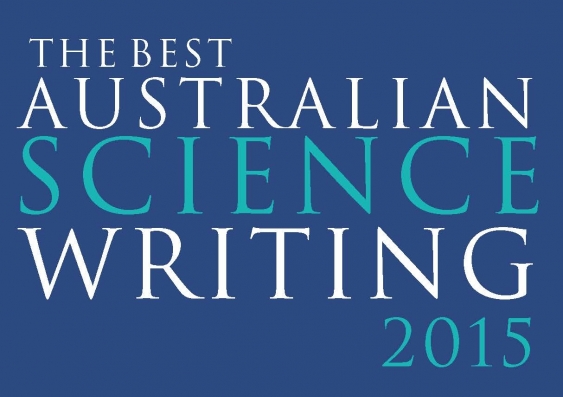President of the Business Council of Australia Catherine Livingstone will lead a celebration of the finest Australian science writing next week, launching an anthology and announcing the Bragg UNSW Press Prize for Science Writing on Tuesday 27 October.
The Best Australian Science Writing 2015 explores a range of fascinating questions. Can we live without a pulse? Are we close to a cure for Huntington’s disease? How does dust connect the cosmos with our bed sheets? Why do lobsters do the Mexican Wave backwards? And what makes us feel wetness when there is no such thing as nerve receptors for this sensation?
Now in its fifth year, the acclaimed series of anthologies draws on the knowledge and insights of Australia’s brightest thinkers in examining the world around us.
This year’s collection is edited by science journalist Bianca Nogrady, and writers include Elizabeth Finkel, Wendy Zukerman, Bridie Smith, Clare Pain, Dyani Lewis, Jane McCredie, Tim Dean, John Ross and Wilson da Silva.
The annual Bragg UNSW Press Prize for Science Writing is named in honour of Australia’s first Nobel laureates – William Henry and William Lawrence Bragg – and is supported by the Copyright Agency Cultural Fund.
First prize is $7000 and two runners-up receive $1500 each.
The shortlisted pieces are:
- Why Aren’t We Dead Yet? by Idan Ben-Barak (Why Aren’t We Dead Yet?, Scribe)
- Beating the Odds by Trent Dalton (The Australian)
- The Past May Not Make You Feel Better by Christine Kenneally (The Invisible History of the Human Race, Black Inc.)
- Robots on a Roll by James Mitchell Crow (Cosmos magazine)
- Messages from Mungo by John Pickrell (Australian Geographic magazine)
- Aliens Versus Predators by Michael Slezak (New Scientist magazine)
For the first time this year the prize was also expanded to include a special category for students. The UNSW Bragg Student Prize for Science Writing is an initiative of UNSW Press, UNSW Science and Refraction Media, and is designed to encourage and celebrate the next generation of science writers, researchers and leaders, with prize vouchers of $500 and $250 for the winner and two runners-up.
The winner is:
Jessica Kitchen (13), A pendulum conundrum, Central Coast Grammar School
The runners-up are:
- Holly Reid (16), Lighting up the universe: what a flame test reveals, Canterbury Girls Secondary College.
- Priya Soni (13), X-rays – superpowers brought to life, Central Coast Grammar School.
Jessica’s piece is published on the Cosmos website and will appear in Double Helix.
All staff, alumni and fans of science writing are invited to the launch
What: Launch of The Best Australian Science Writing 2015 and announcement of the Bragg UNSW Press Prize for Science Writing
When: Tuesday 27 October, 2015 – 6.00 to 8.00 pm
Where: NSW Trade and Investment Centre, Level 47, MLC Centre, Martin Place
RSVP: Registration here is essential


